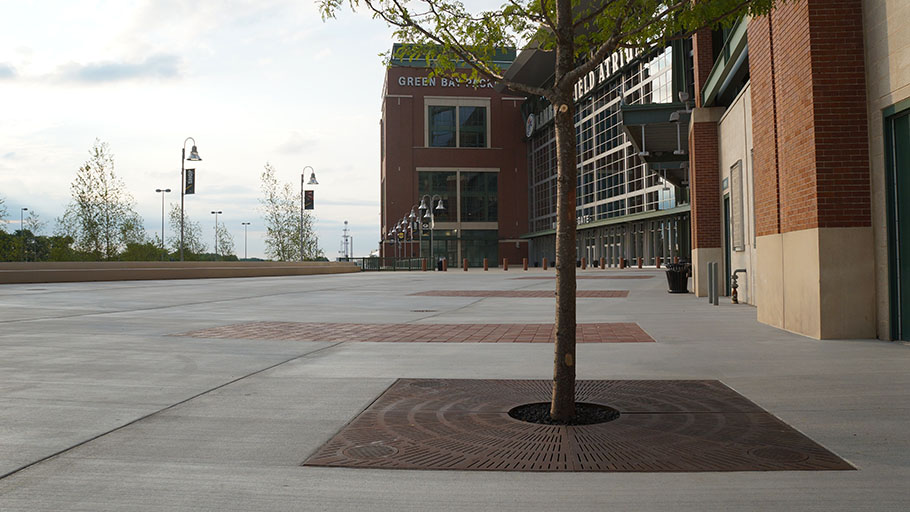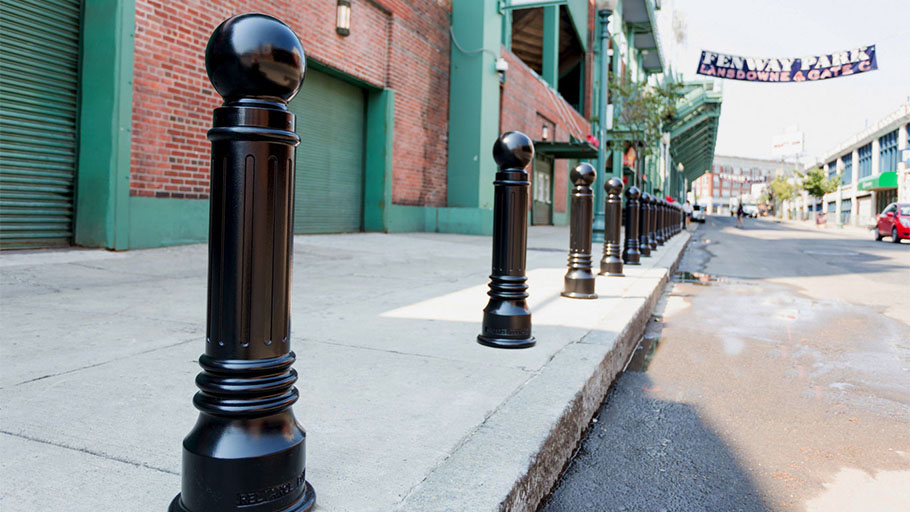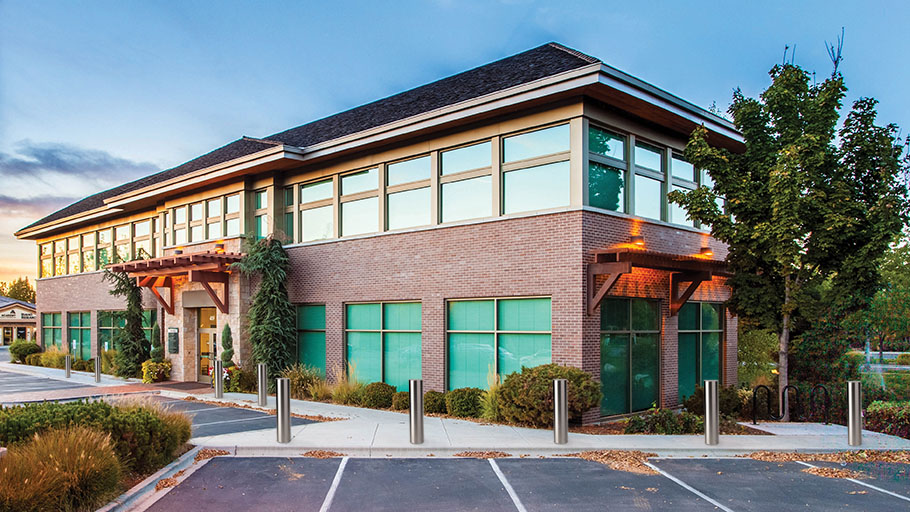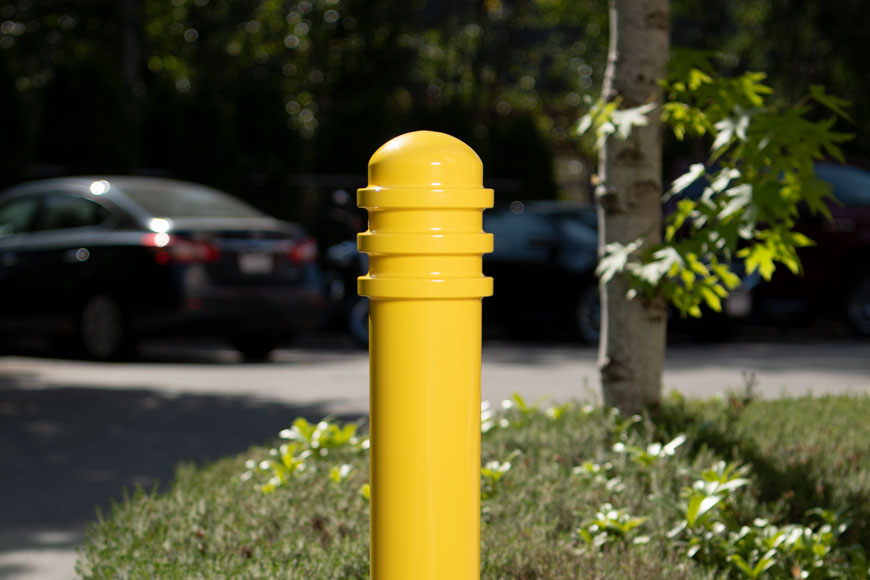Flexible bollards highlight and reinforce rules of the road
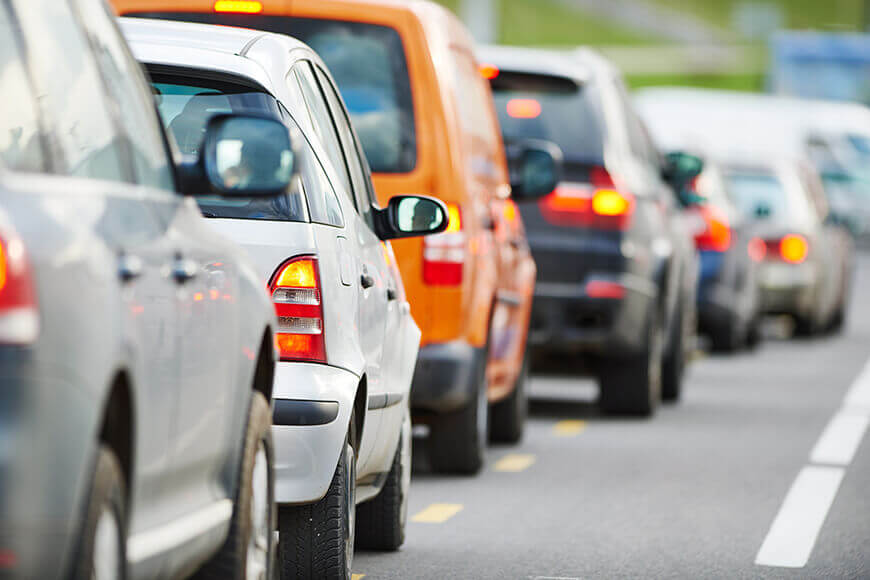
Let’s face it—driving distractions are everywhere. The dangers of outright distracted driving are well-established, but many of us still get over-confident (or just plain stressed) enough to let the small things slide, from glancing at push notifications, to switching playlists or snacking on the go. And that’s not even entering the realm of young families trying to split attention between the road and children in the back seat, often on too-little sleep.
Driver awareness is a huge factor in preventing vehicle collisions. So, short of mass surveillance, how do we help people to pay attention? In this post, we’ll look at how street bollards grab driver attention and get eyes back on the road.
When bollards get hit
Most bollards fall into one of two categories: impact-resistant or non-impact resistant.
Impact resistant bollards serve both as a visual cue and a physical barrier. They are heavy duty, tough posts that can stop a moving vehicle—but only once. Impact-resistant bollards bend or crack under impact, so they need to be replaced after each collision. That said, the sacrifice is well worth it in exchange for protecting vulnerable pedestrian zones from a fast-moving vehicle.
Non-impact resistant bollards, also known as flexible bollards, don’t rely on physical strength to restrict vehicle movement. Instead, they prevent collisions by alerting drivers to off-limits areas and encouraging safe driving habits. If a driver does accidentally bump into one, they will feel gentle resistance instead of a hard stop. Flexible bollards are designed to fold down under pressure, so neither the vehicle or the bollard suffers damage. This is perfect for high-traffic areas with a low speed limit, but not very effective at protecting pedestrians from fast moving out-of-control vehicles. Like most traffic safety measures, it’s all about location.
Visual indicators
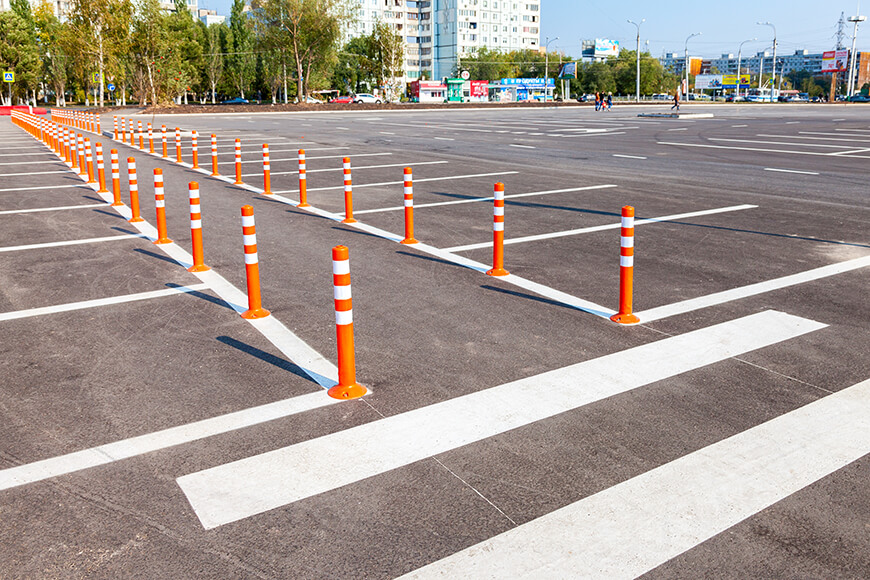
Distracted driving is a major issue in North America. It accounted for 3,300 deaths and 421,000 injuries in 2012 alone—occurring in both city streets and parking lots. Thankfully, a recent push in enforcement and public awareness is starting to lower those numbers. The next big hurdle is improving site safety.
When it comes to vehicle collisions, the most effective harm-reduction measure is avoidance. Often, clear visual markers are enough to direct safe and appropriate driver behavior. Most people are willing to follow the rules, but getting their attention can be a challenge.
A simple sign that reads “Do Not Enter” or “Authorized Vehicles Only” may be enough to deter drivers from entering a fire lane or service entrance. Signs can be missed, however, and a clear physical cue is more effective. When it comes to ensuring the safest driver behaviors, street bollards—both impact resistant and flexible—offer proximate visual signals that reinforce other traffic management strategies.
Street bollards heighten driver awareness
Street bollards stand at the perfect height to be visible to drivers without obstructing sightlines. When installed along road boundaries, they help drivers perceive distance and space more accurately.
When bollards are installed in a series, along a straight road or around a bend, they create the illusion of speed—or, more specifically, they draw attention to themselves as they zip in and out of your field of vision—which also encourages drivers to slow down.
The color and size of a bollard affects how visible they are for drivers. Bollards with reflective surfaces, or reflective bollards, may be ideal for low-light or night conditions.
Bollards for traffic calming
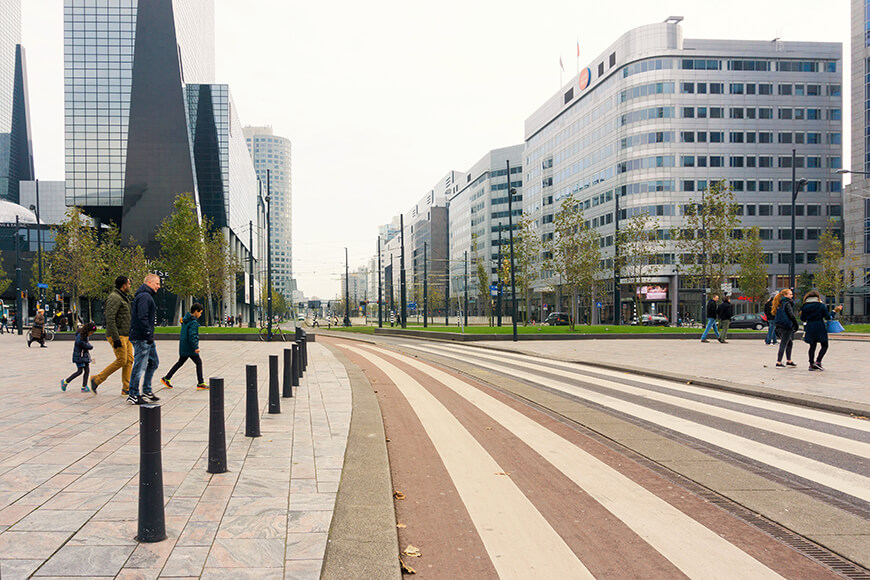
Street bollards can be used on their own to manage road behavior, but they’re often used as part of a wider traffic calming strategy. Traffic calming is a design approach used to encourage safer, more responsible driving. Implementing traffic calming in busy areas—especially in areas with mixed modes of transportation and/or high numbers of pedestrians—can improve safety and reduce risk of accident. It typically uses a mix of two approaches.
- Physical modifications. These include reducing street/lane widths; installing roundabouts, traffic circles, medians and boulevards; diverting traffic flow; and installing vertical deflections and other surface treatments.
- Visual cues. These include signage and other design elements, such as traffic stripes.
Temporary traffic cones and freestanding stanchions are often used to delineate lanes temporarily, but they aren’t nearly as robust as bollards. Where traffic cones and stanchions are easily knocked over or deformed, flexible bollards—that are designed to withstand repeated impacts—are ideal for maintaining visual barriers for the long term.
Flexible bollards
Flexible traffic bollards are an ideal non-impact barrier solution. They help guide traffic and clearly delineation lanes, especially around lane narrowings and other enclosed traffic spaces—such as loading areas or commercial access routes—where there is less risk of a heavy collision and low stakes for damage.
Because they can withstand repeat vehicle impacts without losing their shape, flexible bollards are ideal for high-traffic areas where collisions are frequent and expected.
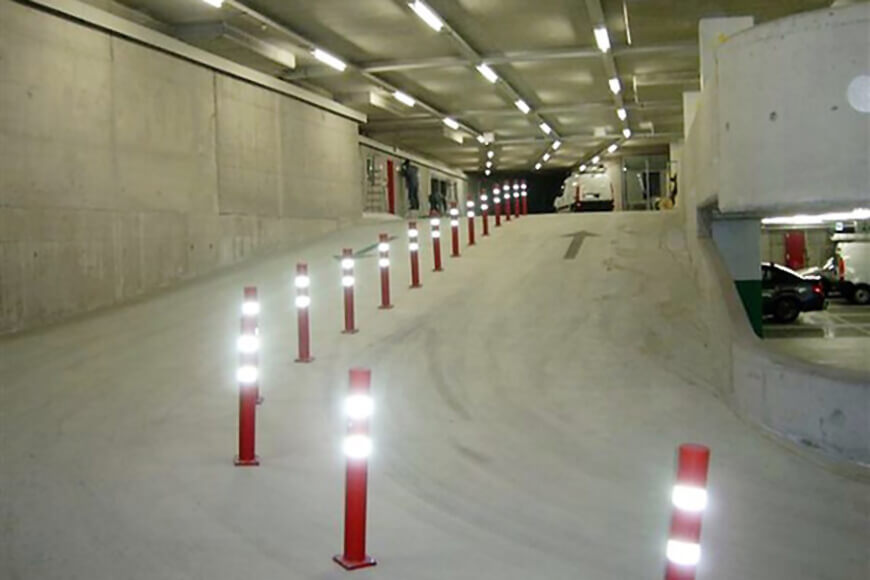
The ability to allow access at a moments notice is especially important for emergency vehicles, which might need to quickly pass a congested point or enter an otherwise restricted area. Emergency vehicles can quickly pass over flexible bollards without any damage to vehicle or bollard.
Reliance Foundry flexible bollards, made from a proprietary plastic composite, have been tested to withstand up to 50 collisions, bending a full 90 degrees, and up to 500 partial impacts flexing to 45 degrees. They are molded with fully permeated dyes, so their color won’t chip or flake away.
Lane delineators are becoming more common in sensitive traffic areas—such as underground tunnels, highway onramps and surrounding bike lanes. Due to the limitations of space and high traffic volume, it’s common for ordinary plastic bollards to get bent or flattened from regular vehicle impacts. Providing a more robust barrier will ensure a much longer performance life and reduced maintenance.
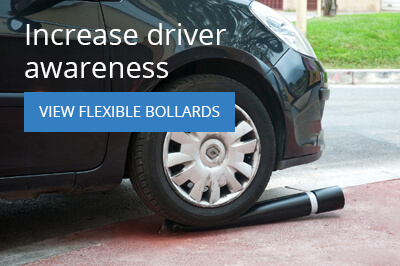
Costs over time
Flexible bollards offer savings over both the short- and long-term. For the short term, they can be much cheaper and easier to install than heavier physical barriers. Over the long term they save on replacement costs, since they don’t need to be replaced after each collision. They’ll also continue looking their best with as little attention as possible.
Design for use
When designing vehicle barriers—whether physical or visual—consider these key factors.
- Physical requirements: Is physical protection a requirement for your building or property? If so, what types of threats are anticipated given the location and surrounding approach environment?
- Aesthetic considerations: When looking at a property and the surrounding environment, what visual expectations are there? High-end, architectural buildings deserve furnishings that do justice to their planning and design. Industrial areas likely don’t have the same expectations. Expectations for commercial and residential environments will depend on the neighborhood or community.
- Risk of impact or physical contact: There are a range of factors that affect the likelihood of vehicle intrusions—including traffic volumes, driver behaviors, vehicle speeds and proximity. If regular impacts are expected, it’s important to consider how these barriers will be maintained or replaced.
- Cost: Whether it’s physical protection, decorative elements or long-term care and maintenance, these factors all add up. A clear budget will help evaluate and prioritize your perimeter requirements.
Factors such as proximity, installation methods and ground surfaces—as well as vehicle type, size and approach speed—will affect the effectiveness of any perimeter barrier. Always be sure to work with a qualified engineer for any bollard installation where physical protection is required.
Sources
- Oakes, Charles G. “The Bollard: Non-Crash and Non-Attack-Resistant Models“. National Institute of Building Sciences: Whole Building Design Guide. Updated October 2014.








